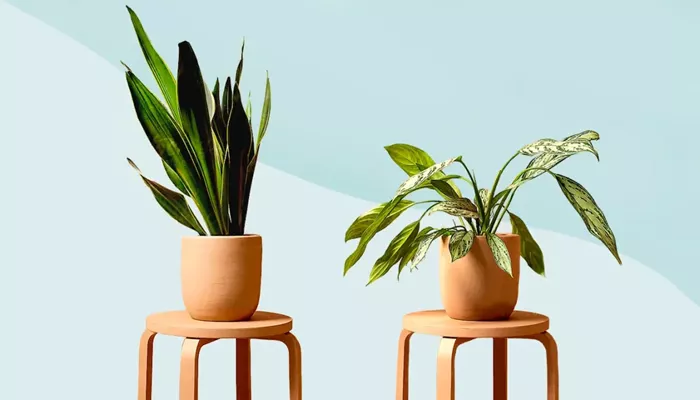Plants are a source of beauty and life in our environment, but when they begin to droop and lose their vibrancy, it can be alarming for any gardener. Wilting is often a plant’s distress signal, and understanding its causes can help you restore your plants to their former glory. In this article, we will explore the reasons behind wilting, from environmental factors to pests, and provide solutions to help you keep your plants healthy and thriving.
What is Wilting?
Wilting occurs when a plant loses turgor pressure, which is the internal pressure of water within the plant’s cells. This pressure is essential for maintaining the plant’s structure and rigidity. When water levels drop, the cells lose their shape, leading to drooping leaves and stems. While wilting can be a temporary condition, it often signals an underlying problem that needs to be addressed.
Common Causes of Wilting in Plants
1. Lack of Water
One of the most common reasons for wilting is insufficient water. Plants absorb water through their roots, and when they do not receive enough moisture, they cannot maintain turgor pressure.
Signs of Underwatering:
- Droopy leaves that may also appear dry or crispy
- Soil that feels dry to the touch
- Wilting that occurs during hot or windy weather
Solution:
To remedy underwatering, check the soil moisture levels. If it is dry several inches down, it’s time to water. Make sure to water deeply, allowing moisture to reach the root zone. Implement a regular watering schedule to prevent future occurrences.
2. Overwatering
While not having enough water can cause wilting, overwatering can lead to the same issue. Excess water saturates the soil, depriving the roots of oxygen, which can lead to root rot.
Signs of Overwatering:
- Wilting leaves that feel mushy or limp
- Yellowing leaves that may drop off
- Soil that remains soggy or waterlogged
Solution:
To address overwatering, allow the soil to dry out before watering again. If root rot is suspected, consider repotting the plant in fresh, dry soil. Improve drainage by using pots with holes and mixing in perlite or sand to the soil.
3. Poor Soil Drainage
Even if you water appropriately, poor soil drainage can cause wilting. Heavy, compacted soil can retain too much water, leading to the same problems associated with overwatering.
Signs of Poor Drainage:
- Water pooling on the surface after watering
- Slow absorption of water in the soil
- Root rot or mold development
Solution:
Amend your soil by adding organic matter, such as compost, to improve its structure. Consider using raised beds or containers to ensure better drainage.
4. Environmental Stress
Plants are sensitive to their environment. Sudden changes in temperature, humidity, or light can cause wilting.
Signs of Environmental Stress:
- Wilting leaves, particularly in extreme heat or cold
- Leaves turning yellow or browning at the edges
- Plants leaning towards a light source
Solution:
To mitigate environmental stress, place plants in suitable locations with stable temperatures and humidity levels. Consider using shade cloth during intense heat or providing protection from cold drafts.
5. Pests and Diseases
Certain pests and diseases can cause wilting by damaging the plant or disrupting its ability to uptake water.
Common Pests:
1. Aphids:These small insects suck the sap from plants, causing wilting.
2. Spider Mites:These pests can lead to leaf discoloration and wilting.
3. Mealybugs:These pests can cause damage similar to aphids.
Diseases:
1. Root Rot:Often caused by fungal infections due to overwatering.
2. Viral Infections:Can disrupt the plant’s growth and lead to wilting.
Solution:
Regularly inspect your plants for signs of pests. Use insecticidal soap or neem oil to treat infestations. For diseases, remove infected plant parts and improve care practices to prevent recurrence.
6. Nutrient Deficiencies
Plants require a range of nutrients to thrive. A deficiency in essential nutrients can lead to wilting and other growth problems.
Common Nutrient Deficiencies:
1. Nitrogen Deficiency:Causes yellowing leaves and stunted growth.
2. Potassium Deficiency:Leads to wilting and browning edges of leaves.
3. Magnesium Deficiency:Causes yellowing between leaf veins.
Solution:
Test your soil to identify nutrient deficiencies. Use balanced fertilizers or organic amendments, such as compost, to replenish lost nutrients.
see also: What Do Plants Symbolize ?
Preventing Wilting in Plants
To keep your plants healthy and prevent wilting, consider implementing the following strategies:
1. Regular Watering
Establish a watering schedule that considers the specific needs of your plants. Check soil moisture regularly and adjust your watering practices accordingly.
2. Soil Quality
Use high-quality potting mix that provides good drainage and nutrients. Amend your garden soil with organic matter to improve its structure and fertility.
3. Pest Management
Monitor your plants for pests regularly. Implement integrated pest management (IPM) strategies to keep infestations under control.
4. Optimal Environment
Create a stable growing environment for your plants. Protect them from extreme weather conditions and provide adequate light.
5. Fertilization
Fertilize your plants regularly with appropriate nutrients. Consider organic fertilizers that slowly release nutrients over time.
6. Knowledge of Plant Varieties
Different plants have varying water and nutrient requirements. Research the specific needs of your plants to provide the best care.
Conclusion: Nurturing Your Plants to Flourish
Wilting in plants is a clear indication that something is amiss. By understanding the causes of wilting and taking proactive steps to address them, you can nurture your plants back to health. Regular care, attention to environmental conditions, and knowledge of plant needs will go a long way in ensuring your garden thrives.
In your journey as a gardener, remember that plants are resilient. With the right care, they can bounce back from distress and continue to bring joy and beauty to your life. So, the next time you see a drooping leaf, don’t despair. Instead, take it as an opportunity to learn, grow, and foster a deeper connection with the natural world around you. By investing your time and knowledge, you will not only save a wilting plant but also cultivate a thriving oasis in your home or garden.


